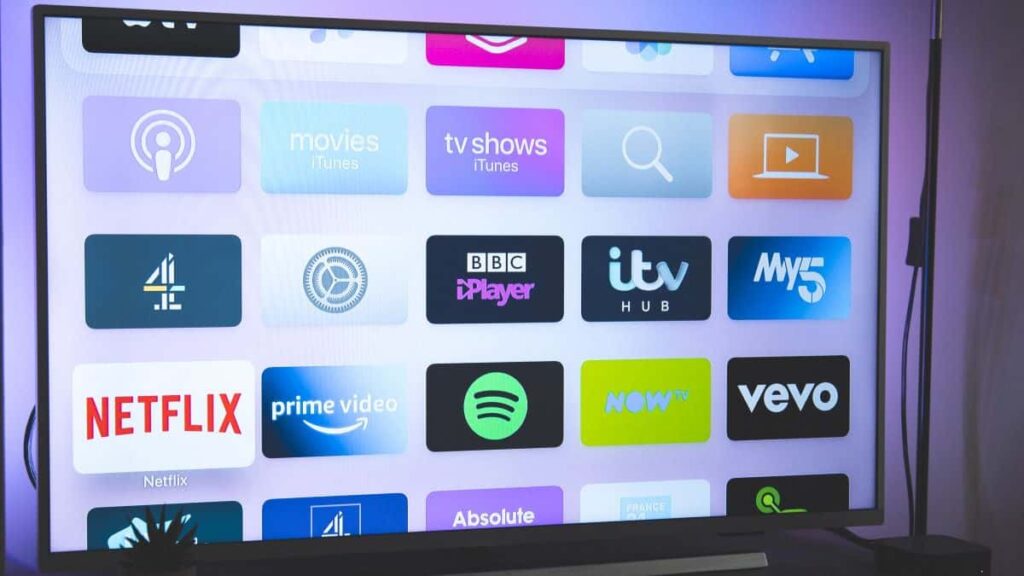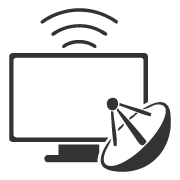Cable television, often abbreviated as cable TV, is a method of delivering television programming to consumers via coaxial cables. Unlike traditional broadcast television that uses radio waves, cable TV utilizes a physical network of cables to transmit signals directly to subscribers’ homes. This system allows for a wider range of channels and clearer reception compared to older forms of television transmission.
What is Cable TV?
Cable TV operates by transmitting television signals through coaxial cables, which are typically composed of copper or aluminum surrounded by insulation and shielding to prevent signal interference. These cables connect from a central distribution point, often operated by a cable company or provider, directly to individual homes or buildings.
The process begins with television programming sources, such as broadcast stations, satellite feeds, or proprietary content produced by cable networks. These sources transmit their signals to a cable provider’s headend, a facility where incoming signals are received and processed for distribution.
From the headend, the signals are sent through the cable network to subscribers. The cable company allocates channels to different frequencies, allowing multiple channels to be transmitted simultaneously through the same cable. Subscribers receive these signals via a set-top box or directly through their television sets equipped with a cable-ready tuner.
How to Use Cable TV
Using cable TV is relatively straightforward for consumers. Once a household is connected to the cable network, they typically require a few components to access television programming:
- Connection Setup: A coaxial cable is connected from the wall outlet to the cable-ready television set or a set-top box provided by the cable company. The set-top box decodes the signals and sends them to the television.
- Channel Selection: Cable TV offers a wide range of channels, including local broadcast stations, premium channels, specialty channels, and on-demand content. Subscribers can navigate through these channels using a remote control provided with the set-top box.
- Interactive Features: Many cable systems offer interactive features such as electronic program guides (EPGs), which display program listings and scheduling information. Subscribers can use these guides to browse upcoming shows, set reminders, or even record programs for later viewing using DVR (Digital Video Recorder) services provided by the cable company.
- Additional Services: Cable TV providers often bundle services such as high-speed internet and digital telephone services with their television offerings. This bundling can provide convenience and cost savings for subscribers who opt to use multiple services from the same provider.
- Technical Support: Cable companies typically offer customer support services to assist subscribers with technical issues, billing inquiries, or service upgrades. Support may be available via phone, online chat, or in-person depending on the provider.
Advantages of Cable TV
Cable TV offers several advantages over other forms of television transmission:
- Expanded Channel Selection: Cable TV provides access to a wide variety of channels, including specialty channels that cater to specific interests such as sports, news, movies, and lifestyle programming.
- Improved Signal Quality: Since cable TV uses physical cables to transmit signals, it generally offers better picture and sound quality compared to older broadcast methods.
- Bundled Services: Many cable providers offer bundled packages that include internet and phone services along with television, providing convenience and potential cost savings for consumers.
Disadvantages of Cable TV
Cable TV has long been a staple in households, offering a wide array of channels and entertainment options. However, its dominance is increasingly challenged by various disadvantages, prompting many to seek alternative means of accessing content.
Firstly, costs are often cited as a significant drawback. Cable TV subscriptions involve not only basic package fees but also additional charges for premium channels and equipment rentals, resulting in substantial monthly bills. These expenses are exacerbated by hidden fees that consumers may not anticipate or fully understand.
Secondly, limited flexibility characterizes cable TV. Subscribers typically face rigid programming schedules and a lack of on-demand content, forcing them to adhere to predetermined broadcast times or purchase DVR services for recording shows.
Thirdly, customer service issues plague many cable TV providers. Complaints regarding long wait times for support and poor resolution of technical problems are common, leading to frustration among consumers who rely on timely assistance.
Furthermore, geographical restrictions restrict cable TV availability in certain areas, leaving residents with fewer entertainment options compared to urban centers. This lack of accessibility compounds the dissatisfaction felt by potential subscribers.
Moreover, advertisements are pervasive on cable TV, interrupting viewing experiences and contributing to viewer fatigue. The commercial breaks, often lengthy, disrupt the flow of programming and detract from the enjoyment of content.
In addition, technological obsolescence is a concern for cable TV users. As digital streaming services and online platforms advance, cable technology can become outdated, limiting access to new features and content delivery methods.
Furthermore, lack of customization is a significant drawback of cable TV. Unlike streaming services that allow users to tailor their viewing experiences by selecting specific channels or genres, cable packages typically offer bundles that include channels of varying relevance to individual preferences.
Additionally, data privacy concerns have emerged regarding cable TV usage. Providers may collect consumer data without explicit consent, raising ethical issues related to surveillance and data protection.
Moreover, environmental impact is another consideration. Cable TV infrastructure requires significant resources for installation and maintenance, contributing to carbon footprints that environmentally conscious consumers may find unacceptable.
Lastly, market dominance by a few major providers limits competition and innovation in the cable TV industry. This lack of competition can lead to stagnant service improvements and limited incentives for providers to address consumer concerns effectively.
Given these disadvantages, many consumers are exploring alternative options to meet their entertainment needs. Here are the top 10 alternatives to cable TV:
Top 10 Alternatives to cable TV:

- Streaming Services: Platforms like Netflix, Hulu, and Amazon Prime Video offer extensive libraries of movies, TV shows, and original content accessible on-demand.
- Over-the-Air Antennas: Providing access to local channels in HD quality without subscription fees, over-the-air antennas are a cost-effective option for basic television needs.
- Digital Antenna DVRs: Devices like Tablo and HDHomeRun DVRs enable recording of over-the-air broadcasts, combining the benefits of traditional TV with modern recording capabilities.
- Live TV Streaming Services: Services such as YouTube TV, Sling TV, and Hulu + Live TV offer live streaming of cable channels over the internet, providing flexibility similar to cable TV without the long-term commitments.
- Video-On-Demand Rentals: Platforms like iTunes and Google Play Movies allow users to rent or purchase movies and TV shows individually, offering flexibility and choice.
- Sports Streaming Services: Dedicated services like ESPN+ and NBC Sports Gold provide access to live sports events and exclusive content, catering specifically to sports enthusiasts.
- Free Streaming Platforms: Websites like Crackle and Pluto TV offer free, ad-supported streaming of movies, TV shows, and live channels, providing a budget-friendly alternative to cable TV.
- Bundled Internet Packages: Many internet service providers offer bundles that include streaming subscriptions, combining high-speed internet access with access to popular streaming services.
- Mobile Apps: Network-specific apps and services like HBO Max, CBS All Access, and ABC allow users to stream content directly from their mobile devices, offering convenience and portability.
- Digital Cable Services: Some providers offer digital cable services that deliver content over internet protocols, providing traditional cable TV channels with enhanced features and flexibility.
Conclusion
In summary, cable TV remains a popular choice for television viewing due to its extensive channel selection, improved signal quality, and bundled service offerings. By utilizing a network of coaxial cables and set-top boxes, cable TV delivers a reliable and versatile entertainment experience to millions of subscribers worldwide. Understanding how to set up and use cable TV enables consumers to enjoy a wide range of programming options and take advantage of additional services offered by their cable provider.










